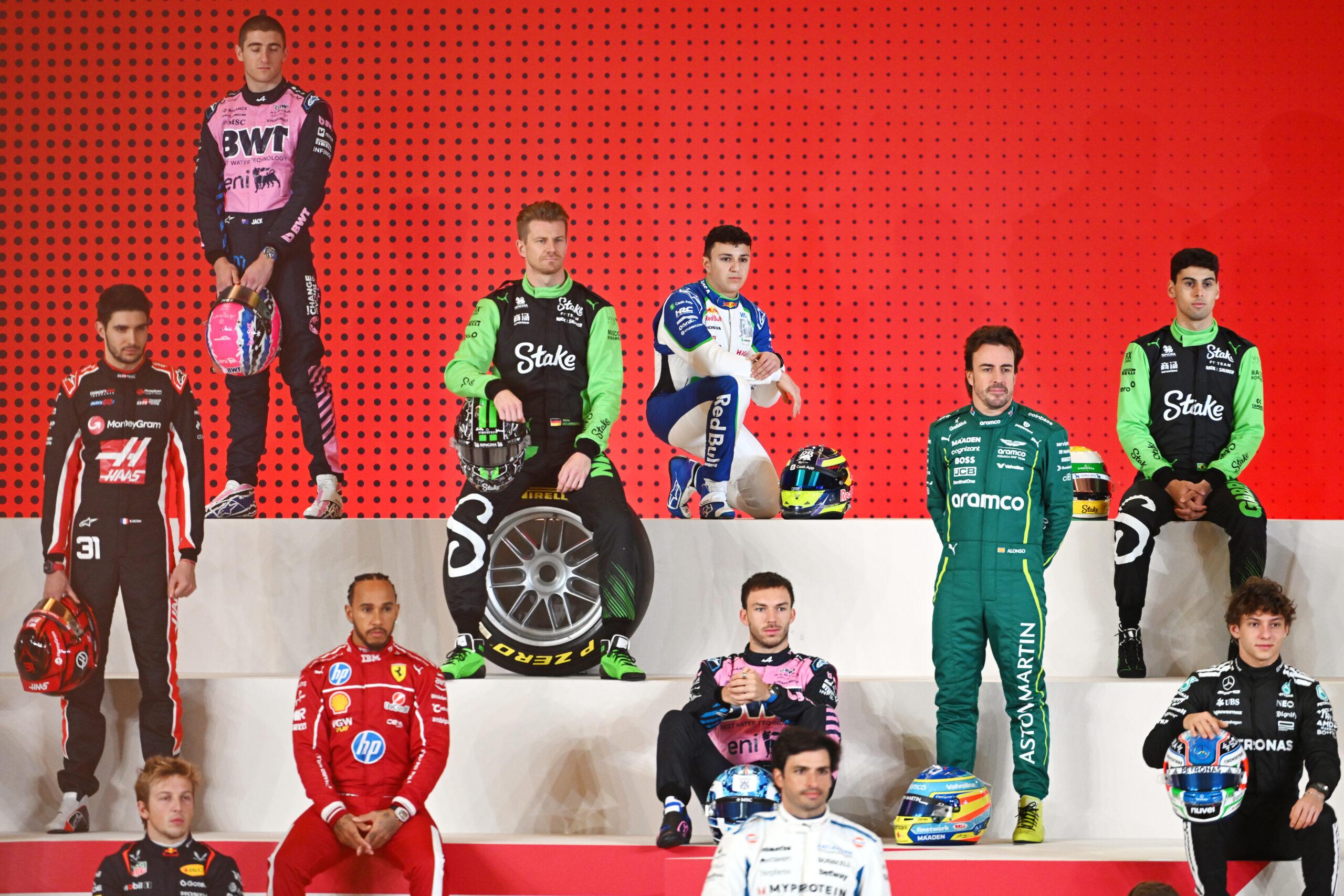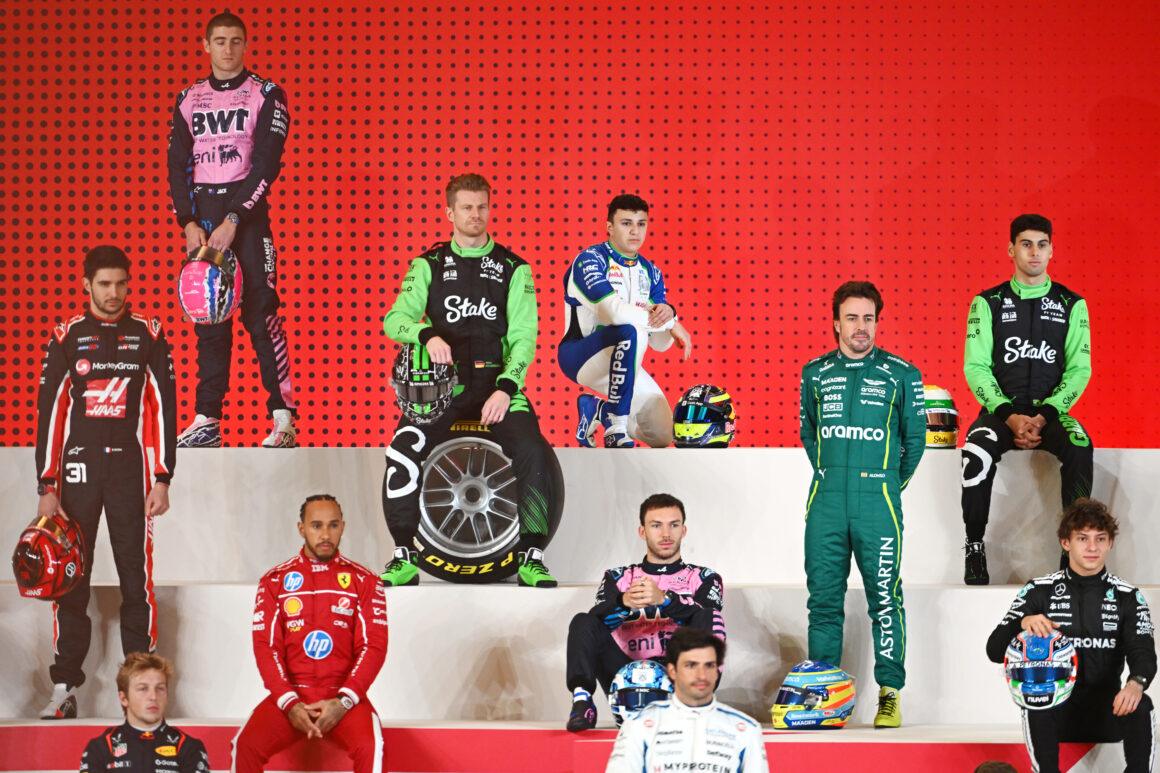See those fireworks under the cars? That’s not decoration. That’s titanium skid blocks doing their brutal day job. When F1 cars run millimeters from the asphalt, the underfloor kisses the track, the skids strike, and sparks fly. Simple physics, with a side of showbiz.
Teams don’t add pyrotechnics. They run cars low for aerodynamic grip. The lower you go, the faster you corner. The price? The floor scrapes, the skids light up, and somewhere a mechanic winces at the wear rate. File this under: Yikes.
The Real Culprit: Ride Height, Plank, and Skids
The floor sits razor-close to the ground. Tracks aren’t billiard tables; they’re bumpy, kerbed, and occasionally mean. Add high speed and downforce, and boom—your skid blocks are eating tarmac. The sparks are a byproduct of a car trying to be a hovercraft and failing gloriously.
Underneath every car is a mandatory skid plank—a long block designed to police ride height. Wear it too thin and the stewards don’t negotiate. They disqualify. You can be fast. You can’t be too low. Not for long, anyway.
So What Actually Sparks?
Those bright showers come from titanium skid pieces integrated around the plank area. Titanium is tough, light, and when it scrapes at 300 km/h, it throws sparks like a welder gone rogue. The wooden-style plank itself doesn’t spark; the titanium does the fireworks while protecting the plank’s life.
This is the cheeky bit: teams place titanium where it’ll strike first. Saves the plank, saves a penalty, looks spectacular. Lights out and away we… oh wait, the floor already hit the deck.
When and Where Do Cars Spark the Most?
Street circuits with angry kerbs? Hello, Monaco and Singapore. Elevation changes and high-speed compressions? Expect a light show. Night races turn every scrape into a photo op. Smoother tracks dial it down, but you’ll still get sparks when fuel loads are heavy and downforce is cranked.
Heavy cars—like at race start with up to 110 kg of fuel—squat harder. More load, more bottoming, more sparks. In qualifying, lighter cars ride higher on springs and aero, so the shower often eases. The plot thickens like a team’s excuse list when the setup is wrong.
Conditions That Turn Up the Fireworks
- Aggressive kerbs: Street tracks and sausage kerbs love chewing floors.
- High-speed corners: Aero load pins the car down—hello titanium confetti.
- Fuel load: Heavier at the start equals more scraping, more drama.
- Uneven surfaces: Bumps, compressions, and camber changes do the dirty work.
Skid Blocks, Plank Wear, and the Rulebook
The skid plank has a minimum thickness. Wear beyond the tolerance means you ran too low and gained an aero edge you’re not allowed to have. The FIA checks after races. You pass, or you’re on a flight home rehearsing apologies.
Need a recent reminder? The United States Grand Prix. Post-race checks found excessive plank wear on Lewis Hamilton and Charles Leclerc. Result? Disqualification. Their pace? Gone. Logan Sargeant? Picked up his first point. The rulebook bites hard.
Why Titanium, Not Just Wood?
Titanium is the bodyguard. It scrapes first, protects the plank, and reduces disqualification risk. Teams place these titanium skids in strategic locations to manage wear while still running the car low enough for aero performance. Smart. Aggressive. Risky if misjudged.
Overdo the contact and even titanium won’t save you. That’s when scrutineering turns into a horror story. Another masterclass in how NOT to pass post-race checks.
Do Sparks Mean Something’s Wrong?
Not automatically. A few sparks? That’s the cost of business in F1. It shows the car is riding the sweet spot—low enough for performance, high enough to survive the stewards. The trick is balancing ride height, spring rates, and aero load without turning the plank into confetti.
But constant grinding? That’s a setup gamble flirting with penalties. You might be quick. You might also be one kerb strike away from a black eye in parc fermé. Somewhere, a PR manager just had a minor stroke.
Classic Situations That Create Sparks
Heavy braking compresses the suspension. High-speed corners crush the car into the deck. Kerb riding? The floor slaps the surface and the titanium sings. At night, the sparks look dramatic. During the day, you’ll still catch them—less cinema, same physics.
Think of it as the car’s stress test. If it’s sparking occasionally, it’s alive. If it’s a bonfire, your setup is begging for mercy.
Myth-Busting the Fireworks
No, teams aren’t doing it “for the cameras.” The sparks are a side-effect of aero obsession. Downforce wins races, and teams will run as low as they dare to get it. The titanium is there to make that gamble survivable—up to a point.
And no, the sparks don’t mean the car is unsafe by default. The tech is regulated, the materials are controlled, and the floors are built to take a beating. Concerned? Keep an eye on the scrutineering report, not the highlights reel.
Historical Callback
Bottoming out so hard you can hear it on TV? Somewhere, 90s F1 is smiling. The sparks feel retro, but the intent is modern: maximize ground effect while keeping the rulebook happy. Channeling peak Benetton vibes—minus the illegal bits.
That defense was pure Schumacher—minus the success part—if you’re trying to argue plank wear wasn’t performance-related. Good luck with that one.
Quick FAQs That Fans Keep Asking
Are sparks dangerous? Not really. They’re mostly cosmetic, though they signal contact. The real danger is sustained bottoming damaging the floor, diffuser, or plank. That’s performance—gone.
Do all tracks produce sparks? No. Surface smoothness, kerb profiles, and elevation changes decide the show. Singapore at night? The competition? Reduced to expensive spectators—at least in the sparks department.
Spotter’s Guide: What You’re Seeing
Long straights into heavy braking? Expect a shower. Tight chicanes with tall kerbs? Guaranteed. Bumpy apexes? Cue the welder. If a car runs wide and slams a sausage kerb, the light show is free. The lap time isn’t.
If you notice the sparks fading late in a race, fatigue isn’t the reason. The car’s lighter on fuel, so it rides higher. Problem solved. For now.
The Bottom Line
F1 sparks are the visible receipt for chasing maximum downforce. Titanium skids scrape, the plank lives to fight another lap, and the car stays legal—hopefully. When teams get greedy, the stewards get busy. Ask Hamilton and Leclerc about Austin. They won’t forget.
So the next time you see a car lighting up the night, don’t just cheer. Nod knowingly. That’s a setup on the edge, wringing lap time from the floor. Grab your popcorn, the underbody is doing the dirty work.

